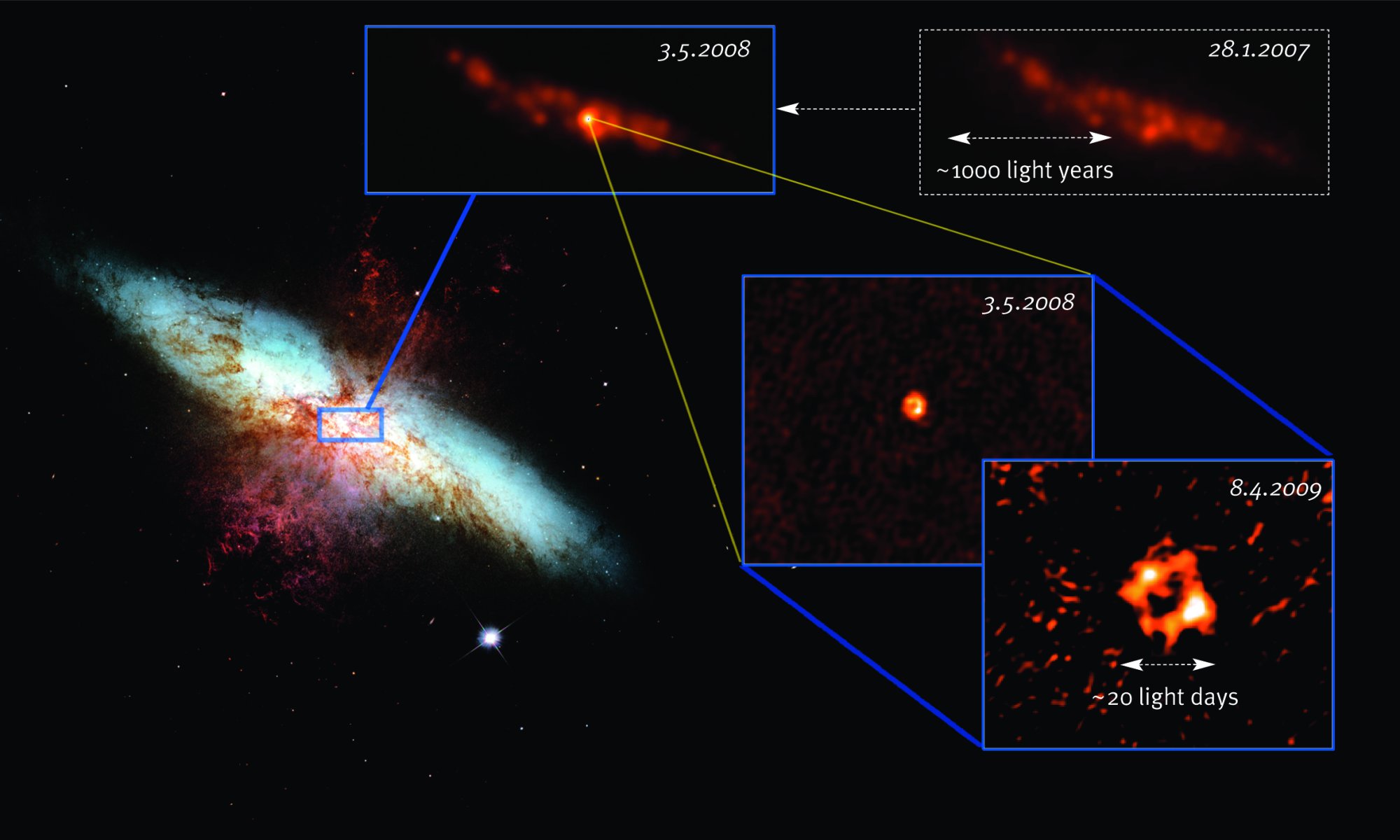Daily Image
04-06-2009An exploding star in an "exploding" galaxy
| Submitter: | Andreas Brunthaler; Heino Falcke |
| Description: | Zooming into the center of the galaxy M82, one of the nearest starburst galaxies at a distance of only 12 Million light years. The left image, taken with the Hubble Space Telescope (HST), shows the body of the galaxy in blue and hydrogen gas breaking out from the central starburst in red. The VLA image (top left) clearly shows the supernova (SN 2008iz), taken in May 2008. The high-resolution VLBI (VLBA+VLA+GBT+EB) images (lower right) shows an expanding shell at the scale of a few light days and proves the transient source as the result of a supernova explosion in M82. Despite being the closest supernovae discovered in the last five years, the explosion is exclusively detectable at radio wavelengths since the dense gas and dust surrounding the exploding star leave it invisible in other wavebands. Without the obscuration, this explosion would have been visible even with amateur telescopes. The source was recently detected also on WRST images (taken by Oosterloo, Tudose, Garrett, & Paragi) and shows a spectral index of ~ -0.8, typical for radio supernovae. eVLBI images at 18 cm taken in April 2009 still show an unresovled point source. Discoveries like this supernova will be routine with the next generation of radio telescopes, such as the Low Frequency Array (LOFAR) which is currently under construction in Europe, or the planned Square Kilometer Array (SKA). The first results are published in this week's release of Astronomy & Astrophysics Letters at http://www.aanda.org/10.1051/0004-6361/200912327 |
| Copyright: | Milde Science Communication, HST Image: /NASA, ESA, and The Hubble Heritage Team (STScI/AURA); Radio Images: A. Brunthaler, MPIfR. |
| Tweet |  |
